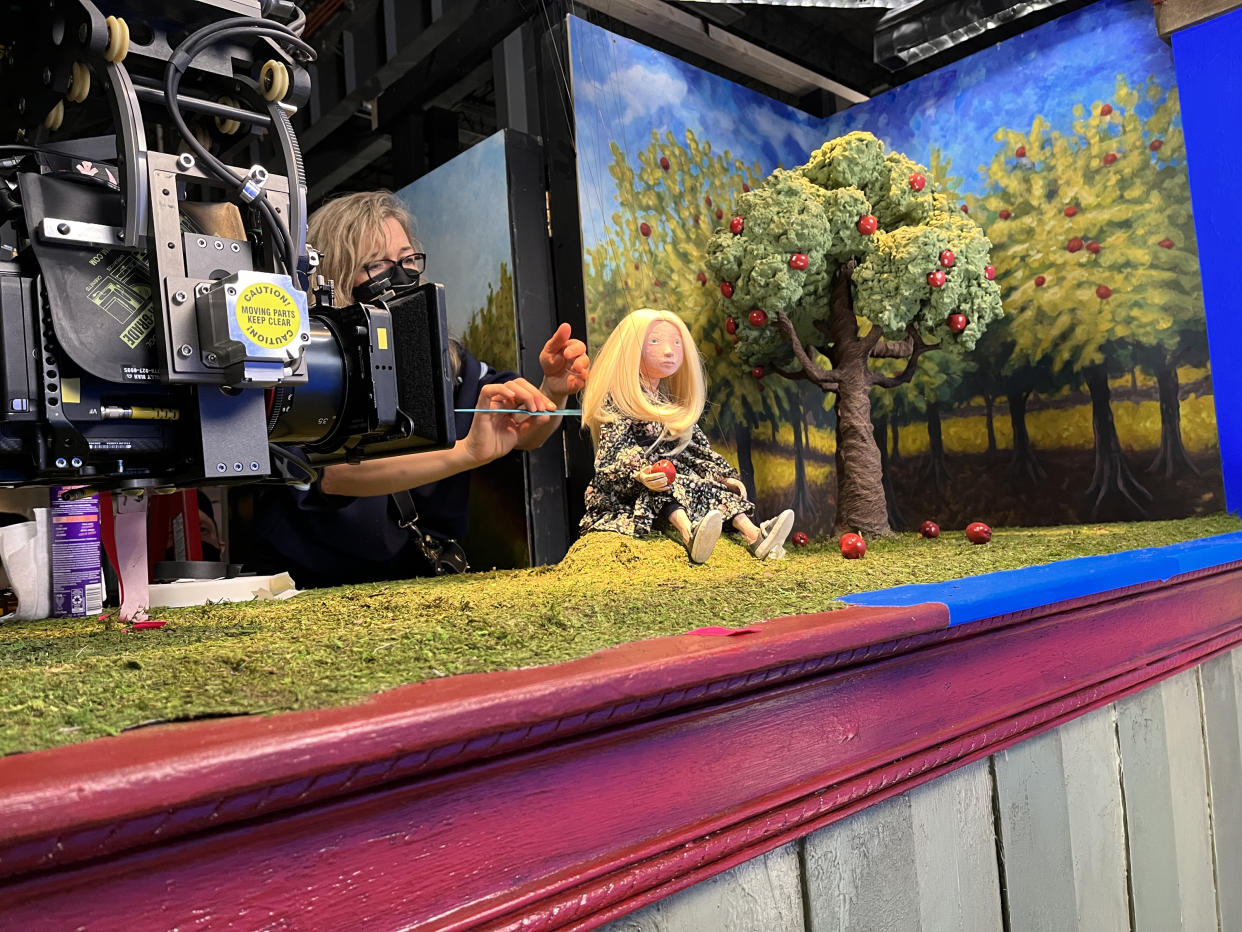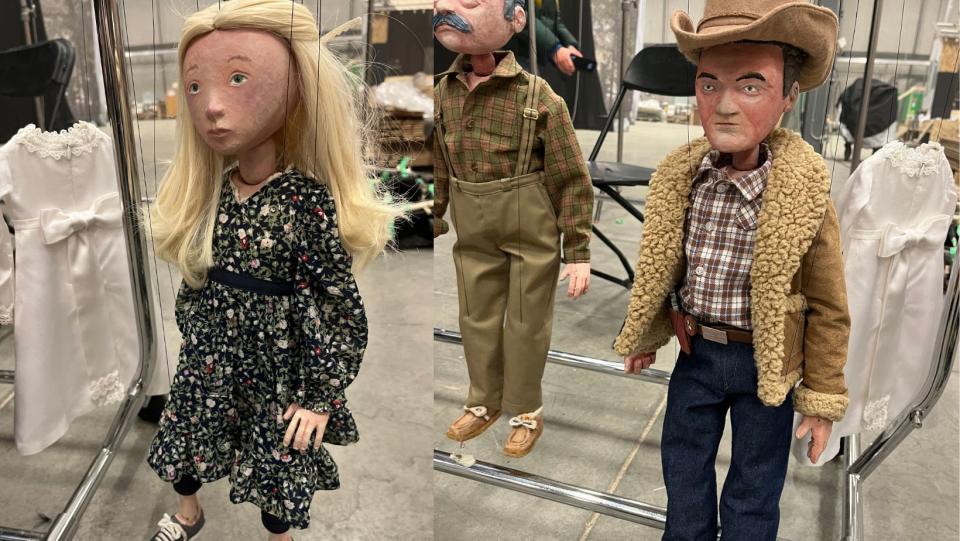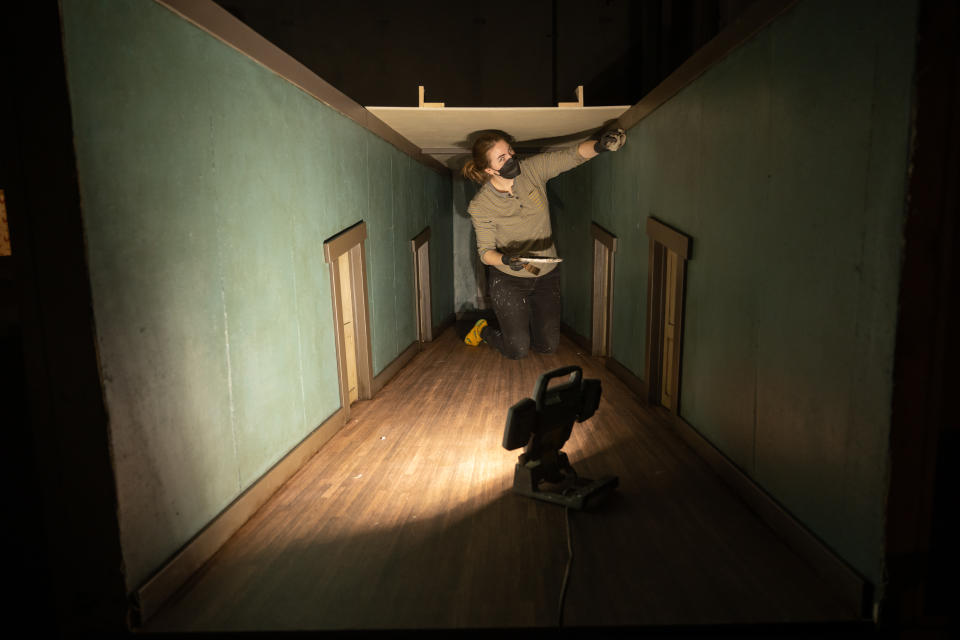Inside the Harrowing Puppet Show at the Center of ‘Fargo’ Episode 7

[Warning” This article contains spoilers for “Fargo” Season 5, Episode 7.]
Over the first six episodes of “Fargo” Season 5, audiences have put together Dorothy Lyon’s backstory. Abused by the misogynist Sheriff Roy Tillman (Jon Hamm), Dot (Juno Temple) escaped and started a new life under a new name, becoming a wife and mother who is now willing to go to any lengths to protect her family. But in the seventh episode, “Linda,” Dot finally shares the extent of her abuse through a marionette show.
More from IndieWire
With Holiday Hit 'The Holdovers,' Paul Giamatti Is Finally Up at Oscar Bat Again
The Real-Life Encounter That Helped Inspire the Crash Scene in 'Ferrari'
There’s a very good reason why Dot uses marionettes to recount meeting the kindly Linda as a teen and moving in with Linda, her husband, Roy, and their son: She’s tracked Linda down at a commune for formerly abused women, and this is how they all share their stories. But “Fargo” uses the art form to create something out of one of the darker Grimm Brothers tales, a horrifying glimpse into what drove Dot away and made her so fiercely protective of her family that she turned her house into a giant booby-trap worthy of Kevin McCallister. But how do you tell the story of domestic abuse via puppetry without minimizing it?
“When we first started with the project everybody all up and down the chain of input were feeling our way through what these puppets needed to be,” puppet designer Judd Palmer told IndieWire. “The intention was, let’s make a puppet that looks like Juno Tempo, right? That seemed like the obvious first step. But when we actually built one of those, everyone recoiled from that idea because it was uncanny valley. Shrinking [her] down but still having those features in an identifiable way became this kind of perverse caricature in a way that actually was kind of alienating.”

As in the episode, the marionettes were all craved out of blocks of wood, a process that is as time-consuming as it is unforgiving. But that was part of the appeal for both Dot and Palmer’s team.
“We wanted to have this hand-hewn kind of feel,” Palmer said. “There’s a lot of more sensible ways to make puppets than to carve them out of wood. If you screw up with a chunk of wood, then you just have to go get another chunk of wood, there’s no real way to kind of save yourself as opposed to working in plasticine or clay. But that was the sort of beauty of it too — there’s a dramatic tension in sitting down with a carving tool and being really scared of making a mistake. I think that comes through in the life of the wood: the fear of the maker.”
Head of the marionette team, Frank Meschkuleit, pointed to that very quality as what contributes to the haunting aspect of the sequence. “The totemic quality of the sculptures led them to have a deeper range of expression despite the fact that they’re solid carvings,” he told IndieWire. “They did a great job of taking the audience into a very, very dark place extremely effectively. Because the minute you put a puppet on, there’s a willingness to suspend your disbelief. You sort of go, ‘Oh, puppets, let’s go,’ and then they go to this horrible place, and you’re already in the room, you can’t leave.” Also contributing to its power is Temple’s voice performance. Not only does she narrate (with typical “Fargo” toughness) the events we witness unfolding, but she subtly morphs from character to character as she recreates the events that led her to escape.
Adult puppetry has long been a staple of live theater (from “The Lion King” to “War Horse”), but the opportunity to contribute to a critically acclaimed prestige drama offered a chance to show the power of the art form to an entirely new audience. “Everybody kind of knows that there’s this incredible sophistication that is possible within the puppet world,” Palmer said. “They don’t all have to be socks with googly eyes. At the Old Trout Puppet Workshop, that’s what we do. We don’t really do kids shows. So it was an interesting opportunity for us to be like, ‘OK, they want us to do puppets for TV, that’s gonna have hundreds of thousands of viewers, but we’re gonna get an opportunity to evangelize for what this art form is actually capable of.'”

Perhaps unsurprisingly, the building and manipulation of marionettes is a fairly esoteric skill, as Meschkuleit put it. But he was able to assemble a team with a wide array of abilities, including “Team America” puppeteer Greg Ballora. “We had a really great mix of puppeteers who had experience both with marionettes and with Muppet-style puppeteering,” he said. “That episode explored a lot of very interesting manipulation styles. And I think that’s part of what gave it so much clout. If the whole thing had been Punch and Judy puppets, after a point, you’re kind of a bit numb to it. But because we kept changing mediums in a sense while still staying under the umbrella of puppetry, I’m pretty sure that helped that episode punch above its weight.”
The sequence benefits, too, from the sets being built to scale. “Because the set was puppet scale, it felt very real,” Meschkuleit said. “And it also forced the puppeteers to maintain the scale of the environment. You can sometimes cheat a step to have puppets cover more ground. But this was all scale accurate, which meant it unfolded in real time. It was that much more real and that much more powerful because of it.”
New episodes of “Fargo” air on Tuesdays at 10 p.m. ET.
Best of IndieWire
Quentin Tarantino's Favorite Movies: 60 Films the Director Wants You to See
Where to Watch This Week's New Movies, Including 'The Iron Claw' and 'All of Us Strangers'
2023 Movies Shot on Film: From 'Oppenheimer' to 'Killers of the Flower Moon' and 'Maestro'
Sign up for Indiewire's Newsletter. For the latest news, follow us on Facebook, Twitter, and Instagram.

